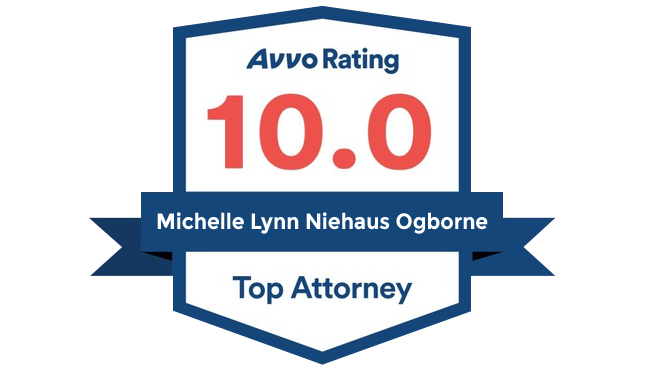Served Divorce Papers: Now What?
If you’re anticipating it or not, being served with divorce papers is usually a disheartening and straining experience. Your marriage has come to an end and although you may have known it was coming, it’s still quite stunning to have the physical proof served to you. If you’re not sure what you should do first, you aren’t alone. What follows is a step by step guide to what actions you should take after you’re served with divorce papers.
Step One: I’ve Been Served Divorce Papers
After you accept the papers (and please, don’t try and avoid getting served), the first action you should take is to read them completely. Take special note of dates you see that are listed. You are required to make a response by a specific date, so take that date down straight away on your calendar or mark it in your cell. You will typically have around 3 weeks or respond to the grievance and you’re not going to want to forego that deadline.
However, if you choose not to respond, you will not be stopping the divorce from happening; you’re just letting the court know that you don’t want any involvement in the divorce. They’ll continue without you.
Additionally, if there is a temporary custody order in place, your spouse may be able to take the children away and have sole custody of them while awaiting the hearing. Make sure to read the papers thoroughly.
Step Two: Seek Out Legal Counsel
There are a couple of options when you are served with divorce papers. If you have no budget issues and you want to retain an attorney, now’s the time to seek one out. If, like many that are served with divorce papers, money is a concern, you may utilize a legal advocacy group as an alternative. They are a group of legal professionals that will assist you in representing yourself in court. They can assist you by getting your paperwork organized, filling out the forms, compiling documents, keeping track of dates, counsel you on your appearance in court (if required), setting you up with other professionals that you may require during the process, and keeping your documents stored safely following the divorce and custody agreements are completed.
Step Three: File a Response to the Divorce Paperwork
After you send in your response following you being served with divorce papers, the judge will typically want to meet with you both to see if you can settle your case peacefully. If you both agree to most of the provisions of the divorce (for instance, where the children will live the most, who gets the house, ways for retirement account distribution, etc.), then the case may be settled. This is a somewhat fast process, subject to the state, and, in a lot of cases, be the least costly option.
If you can’t come to an agreement on some of the major issues of the divorce, do not worry: This doesn’t mean that your case will inevitably have to go to trial. Bear in mind that roughly 1 out of 20 divorce cases end up going to trial; a big majority settle their case out of court.
Step Four: Seek Mediation
A lot of times, the next act is to search for the services of a mediator following being served. This is a unbiased 3rd party that will help you both come to agreements and negotiations during the divorce process. They will be able to assist you in deciding on matters related to custody, the marital home, financial institution accounts, etc. Occasionally mediation will take more than one attempt; there’s nothing wrong in leaving your first mediation session and thinking things over with one another and individually prior to returning for a second one.
Step Five: Create a Parenting Plan
If possible, you both will be able to come up with a parenting plan that gives each of you time with the children. If it’s not possible, a mediator may be able to help. In a lot of cases, a (GAL) guardian ad litem will be required. This is an individual that meets with you and your spouse individually to gather insight into your separate relationships with the children. Subject to the ages of them, the GAL may meet with them, also. They will also occasionally interview some of your friends and family. This process is used when it’s expected that a judge will be required to make a custody decision; if both of you can make the decision on by yourselves, you can then just put together a parenting plan and proceed from there.
Step Six: Settle or Go to Court
At this point, many divorces will already be finalized, whereas others will require getting ready to go to court. A lot of divorce cases do settle prior to the court dates; in many cases, it could be meager days ahead of time. In a lot of cases, it’s beneficial to come to an agreement on a settlement. Court cases could take a lot of months or possibly years and can be very costly.
The legal advocacy group can help you weigh your options as you’re going through the process of choosing to settle or going to court. It doesn’t matter which route both of you take, it ends in divorce and, when relevant, a custody and/or child support judgment.
Step Seven: Rebuild Your Life
Following your divorce, you may feel distraught and exhausted. This is typical and not uncommon. Take a little time to contemplate how you want to move forward with establishing back your life. You’ll need to take an inventory of your financial circumstance and think about when you’ll have your children (and the times you won’t). Having the rest of your life lying ahead, it’s okay to take a little time to rest and get to know yourself now that you’re single. As the months and years pass, you’ll be required to make some big decisions, but immediately following the divorce settlement or trial, it’s also okay to lay low and think about what you’ll want to do next.
Choose the Right Divorce Lawyer in Arizona
Regardless of the choice you make, it’s important you make the best choice for you when hiring a divorce attorney. Remember: The decisions you make now can affect your future. Ultimately, choosing the best lawyer will depend on which lawyer feels best for you and your situation.
If you want to learn about Michelle N. Ogborne and see if she is the right attorney to represent you in your collaborative divorce in Arizona, contact us today!
Engaging with an attorney to protect your family is never an easy step. Whether you need to protect your family from the unthinkable or restructure your family through collaborative divorce, we’re here to help. When you’re ready to schedule a consultation with Michelle Ogborne, please visit the scheduling page to get started.







